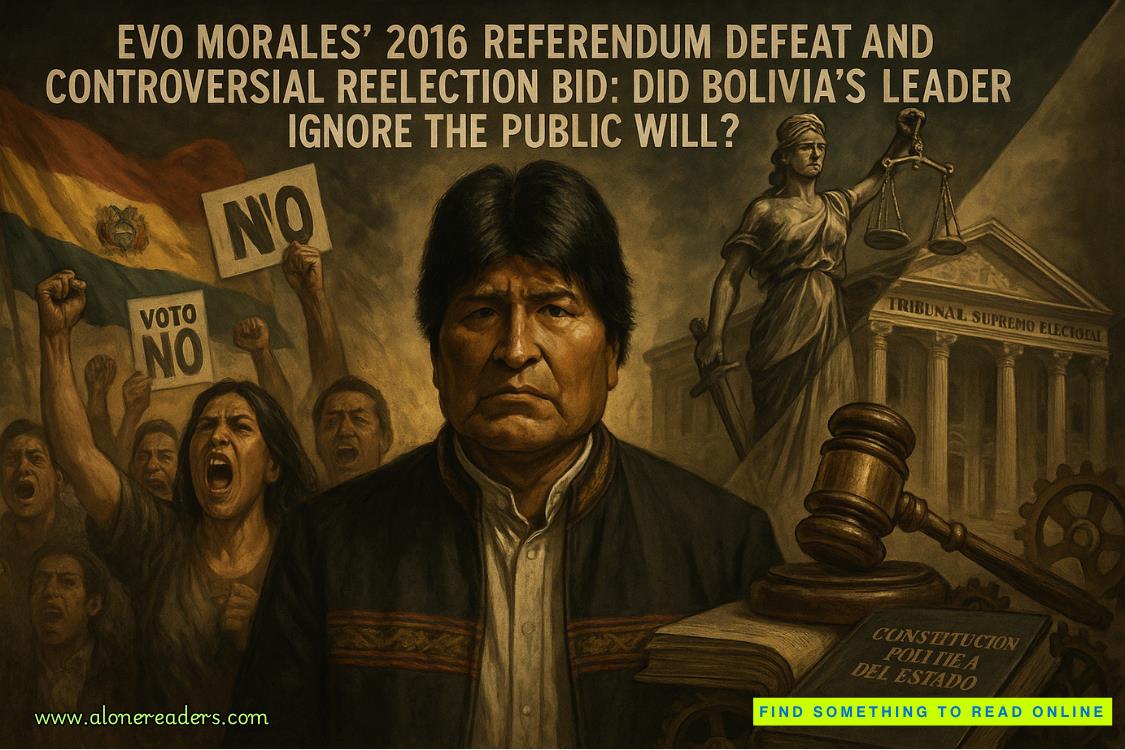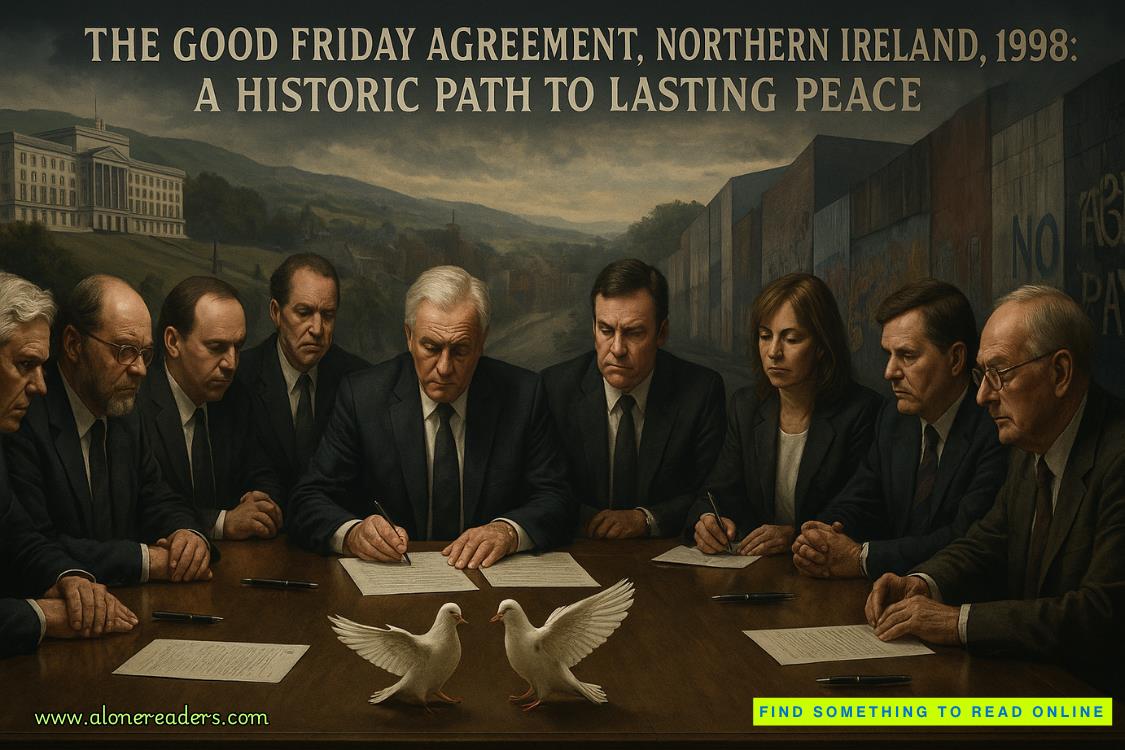Page 25 of The Lincoln Myth (Cotton Malone 9)
and beliefs of our founding fathers which are no longer being reflected by the federal government.
He liked the wording but had not liked the comments made in the press by its creators. Too radical. Too fanatical. They’d sounded absurd. What the petition had done, though, was draw attention to the issue, which the news channels had salivated over for several days.
“Georgia, Florida, Alabama, and Tennessee now have started similar petitions. But none of them comes close to the 125,000 signers from Texas. These are just publicity stunts, but they don’t hurt a thing.”
He laid the iPad on the table. “We have to bring this discussion out of the South.”
One of the others said, “We know. A recent Zogby poll shows that, nationwide, 18% favored secession of their state from the Union. Another poll, from The Huffington Post, found that 29% said their state should be allowed to secede, if a majority of the residents so wanted. But here’s the interesting part. Another 33% in that study were unsure.”
Which meant a potential 62% could be in favor of a state’s right to leave the Union.
No surprise, really.
“Which is why we have to change the tone,” he said. “Luckily, to quote John Paul Jones, We have not yet begun to fight. Where are we legally?”
“I’ve had my students working on that,” the professor said. “A hypothetical exercise in legal reasoning, I called it. They’re all bright people and they’ve developed a solid treatise.”
He listened as the academician explained their premise.
The Declaration of Independence contained the clear statement that whenever any form of government becomes destructive, it is the right of the people to alter or to abolish it, and to institute new government, laying its foundation on such principles and organizing its powers in such form, as to them shall seem most likely to effect their safety and happiness. It went on to pronounce, in no uncertain terms, when a long train of abuses and usurpations evinces a design to reduce the people under absolute despotism, it is their right, it is their duty, to throw off such government, and to provide new guards for their future security.
Each of the original thirteen colonies had declared its own independence from Great Britain. After the war, England recognized each state as sovereign. The states eventually formed the Articles of Confederation and Perpetual Union, which created a federal government as their collective agent. But in 1787 the states seceded from that perpetual union and adopted a new constitution. Nowhere were the words perpetual union included in that new constitution, and no state had agreed to such permanency when ratifying. In fact, Virginia, Rhode Island, and New York, in their ratification votes, specifically reserved the right to secede, which was not opposed by the other states.
He liked what he was hearing.
Since the Civil War any talk of secession had been muted by the fact that the South lost and the Supreme Court of the United States proclaimed in 1869 that the act was unconstitutional.
The professor produced a bound document, two inches thick.
“This is their analysis of every judicial decision in the country that ever considered the issue of secession. Mainly federal cases from the mid-19th century and a few state decisions. All, though, are uniform in holding the concept of secession illegal.”
He waited to hear what he needed to know.
“Nearly all of those decisions, though, use Texas v. White as their basis,” the professor said. “Knock that out, and there’s no precedent. We’d be in virgin territory. I had them analyze that aspect quite carefully. The conclusion is inescapable.” The professor laid the bound pages before him. “It’s a house of cards. Removing just that one will cause the whole thing to collapse.”
He realized his ally was referring to the legal precedents, but the same metaphor applied to the assemblage of fifty states.
Secession was an issue he’d long considered, ever since he decided that the federal government was broken beyond repair. It had become too big, too arrogant, too foolish. The Founding Fathers fought a long and bloody war against a centralized authority—England and its king—so they never would have created a new autocracy. It was self-evident in 1787 that no state could be forced to either join or stay in the Union. Both decisions were up to the people of each state. In fact, a specific proposal to allow the federal government to suppress a seceding state failed at the Constitutional Convention.
So when had the notion of a perpetual union taken hold?
He knew exactly when.
Lincoln.
And only a handful of historians had ever grasped the truth that Lincoln fought the Civil War not to preserve an indivisible union. Instead, he fought that war to create one, coining the notion that the Union was somehow perpetual.
But Lincoln was wrong.
The Declaration of Independence was an act of secession, executed in direct conflict with British law. The ratification of the new Constitution was a secession from the Articles of Confederation, even though those articles, as first drafted and approved in 1781, expressly stated that the union shall be perpetual.
The issue was crystal clear.
States had never lost their right to secede.
And history supported that belief.
The Union of Soviet Socialist Republics dissolved in 1991 when fifteen of its states seceded. Maine formed when it seceded from Massachusetts. The same thing happened when Tennessee left North Carolina and West Virginia emerged from Kentucky and Virginia. And in 1863, when Lincoln created West Virginia, he did so without the consent of its people. International law proclaimed that sovereignty cannot be surrendered by implication, only expressly, which means the Constitution’s silence on the issue of secession is significant. The Tenth Amendment itself stated that the powers not delegated to the United States by the Constitution, nor prohibited by it to the States, are reserved to the States respectively, or to the people.
Nowhere in the Constitution were states prohibited from seceding.
“I like where we are,” he said. “You’ve done a great job. But keep prepping.”
“Are things progressing on your end?” one of the lawyers asked. He knew what he’d promised to deliver. The most important ingredient.
“We’re closer every day. It could happen anytime. I’m heading back to Washington when I leave here to follow up on a new lead, which could be significant.”
He felt a surge of excitement.
A civil war was coming.
But not like 1861.
This time there would be no troops on the battlefield. Hundreds of thousands would not lose their lives. No bloodshed at all, in fact. The only weapons would be words and money.
The words seemed to be coming together. Perhaps the final piece of the puzzle awaited him in Washington. And he had access to plenty of money. Soon he might even have the entire Church of Jesus Christ of Latter-day Saints—with its billions—at his disposal.
If Charles R. Snow would just go and meet Heavenly Father.
All was right.
He stood from the table and faced his associates, like a general with his colonels.
“Gentlemen, just remember one thing. Unlike the first attempt at secession and the failed Confederacy, we’re going to win our war.”
TWENTY-SEVEN
SALZBURG, AUSTRIA
5:20 P.M.
MALONE HAD VISITED SALZBURG BEFORE. GUARDED ON ITS flanks and rear by the towering Mönchsberg cliffs, the ancient town occupied both sides of the swift-moving Salzach River. A forest of church spires pierced the evening sky, gathered about cobbled squares and a maze of streets that, four hundred years ago, had formed a religious mecca. First a Roman trading center then a Christian outpost, it became a bishopric in the 8th century. Called the German Rome, its cathedrals and palaces were built to satisfy the lavish tastes that princes of the church had then demanded. Salt gave the province, the town, and the river its identity—culture, music, and art had provided its heritage.
He’d arrived on a flight from Copenhagen and ta
ken a taxi into town. He chose a hotel near the Mozartplaz, a small establishment away from where he thought Salazar and Cassiopeia would be staying. He knew little about his adversary but enough to conclude that the Spaniard was at either the Hotel Sacher or the Goldener Hirsch. The Sacher sat across the river, near the Mirabell Palace, in what many called new town. The Goldener Hirsch occupied a more central locale in old town on Getreidegasse, one of the most famous shopping streets in the world. He decided that the Goldener Hirsch was the best bet and walked there, following the pedestrian-only routes. Narrow houses rose on both sides, the fronts washed with green, tawny, or a rusty pink. Each was a backdrop for a canopy of black ironwork filigree, cantilevered signs announcing each business with an image depicting the appropriate guild. The one for the Goldener Hirsch was particularly fitting—a lacy grillwork supporting a leaping golden stag.
He entered through dark green wooden doors into a lobby filled with rural Bavarian furniture. A long mahogany desk ran its length toward a staircase and elevator. He decided the best way to handle matters was to act like he knew what he was doing.
“I’m here to see Senor Salazar,” he told the young woman behind the counter. She had a broad face and unblinking eyes and was dressed in a staff uniform, like the other two attendants standing nearby. He kept his gaze focused on her, as if expecting action on his request.
“He has only recently arrived,” the woman said. “And did not mention any guests were expected.”
He feigned annoyance. “I was told to be here now.”
“He’s in the restaurant,” one of the young men in uniform said.
He smiled at the attendant, then found a wad of cash he’d purposefully stuffed into his pant pocket and handed over twenty euros.
“Danke,” he said, as the offering was accepted.















